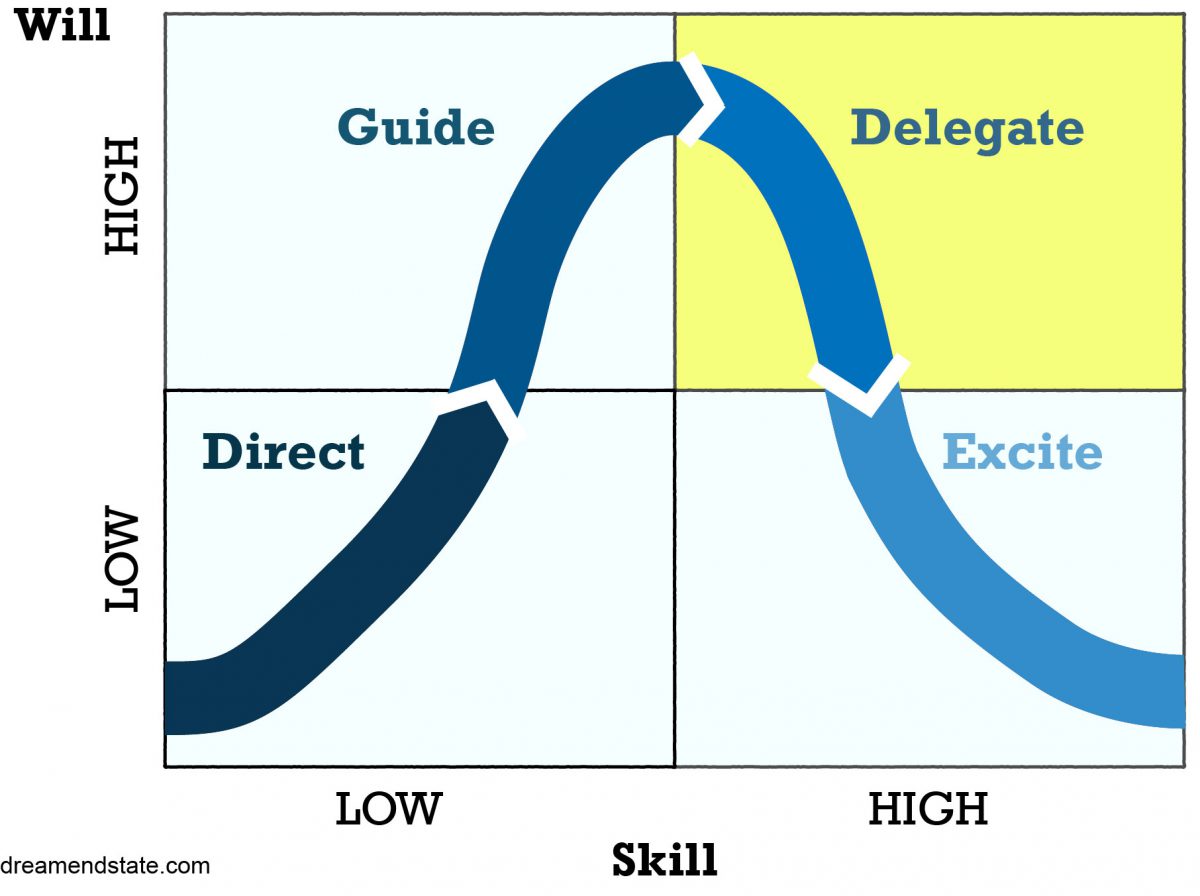This model will help you become a better coach and make your team more productive.
Leaders who adapt their style to the employee and the task in hand are more likley to be great coaches. This is “situational leadership,” according to Paul Hersey and Ken Blanchard. Max Landsberg developed this thinking in his book The Tao of Coaching and introduced the will-skill matrix.
Key to applying this model is figuring out where the team member is in terms of skill and will. This is crucial because the way you deal with a lack of skill or competency is worlds apart from how you’d deal with a lack of desire and motivation.
As coach, you’re trying to move everyone to the high will, high skill quadrant, top right.
What to do in each quadrant
Watch out for
This is a task-focused technique. Be wary about slipping into generalities about the person overall. It’s easy to make a sweeping diagnosis. Resist the temptation! You could fall prey to the “Golem effect” where your low expectations of (let’s call him) Bob after he failed in a task carry over and impact the next task, which Bob can perform competently and it’s a task that he is enthusiastic to do. The Golem effect is the opposite of the Pygmalion effect where the performer lives up to the high expectations of the observer like a self-fulfilling prophecy.
Try to avoid the temptation to micromanage where possible. It’s fine to set out the “what” but it’s more rewarding for them to figure out the “how.”
Be wary of the Dunning-Kruger effect, especially for young and inexperienced recruits. It’s your job as manager to work out the difference between confidence and competency.
On the flipside, be careful about becoming too hands-off with top performers by slipping into a laissez-faire approach. Often motivation will wane if employees feel like they don’t have the recognition for the tasks they’re doing, have lost sight of the purpose or because tasks are no longer a stretch and have become rote and mundane.
Resources
Hersey, P., Blanchard, K., (2008) Management of Organizational Behavior: Leading Human Resources. New Jersey/Prentice Hall
Landsberg, M., (2015) The Tao of Coaching: Boost your effectiveness at work by inspiring and developing those around you. Profile Books

